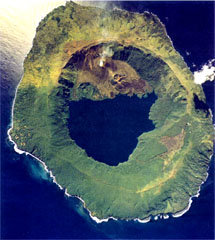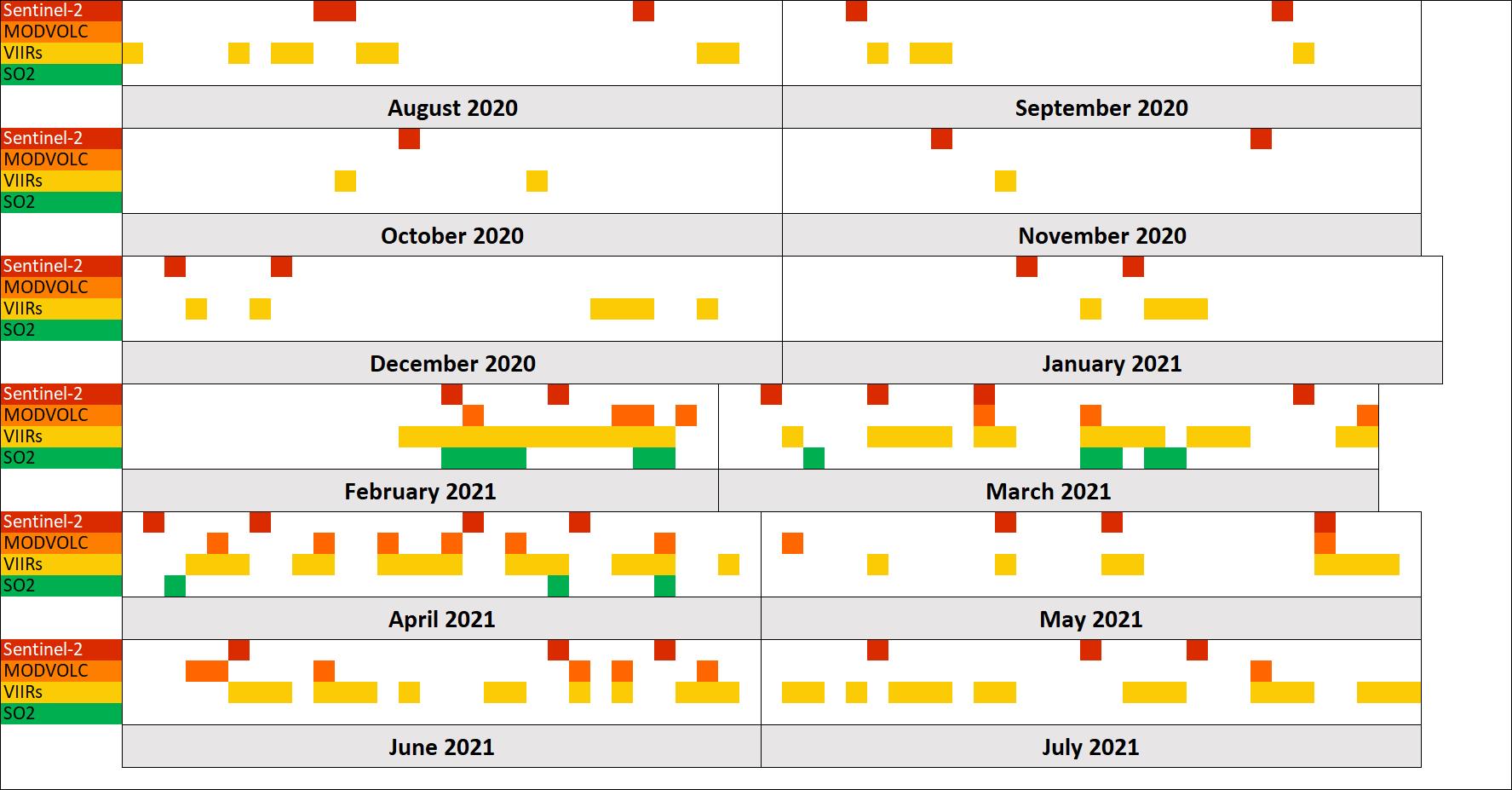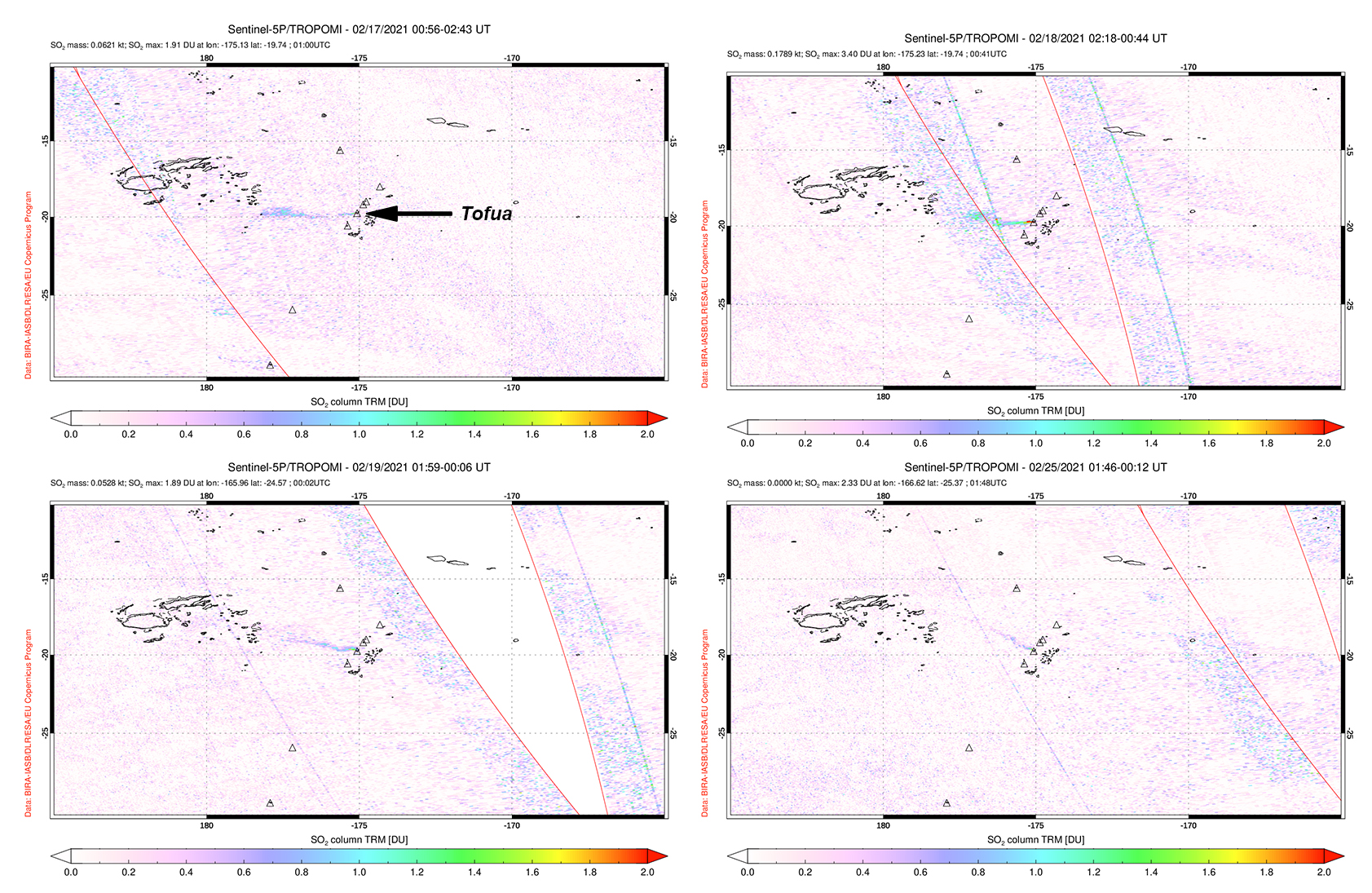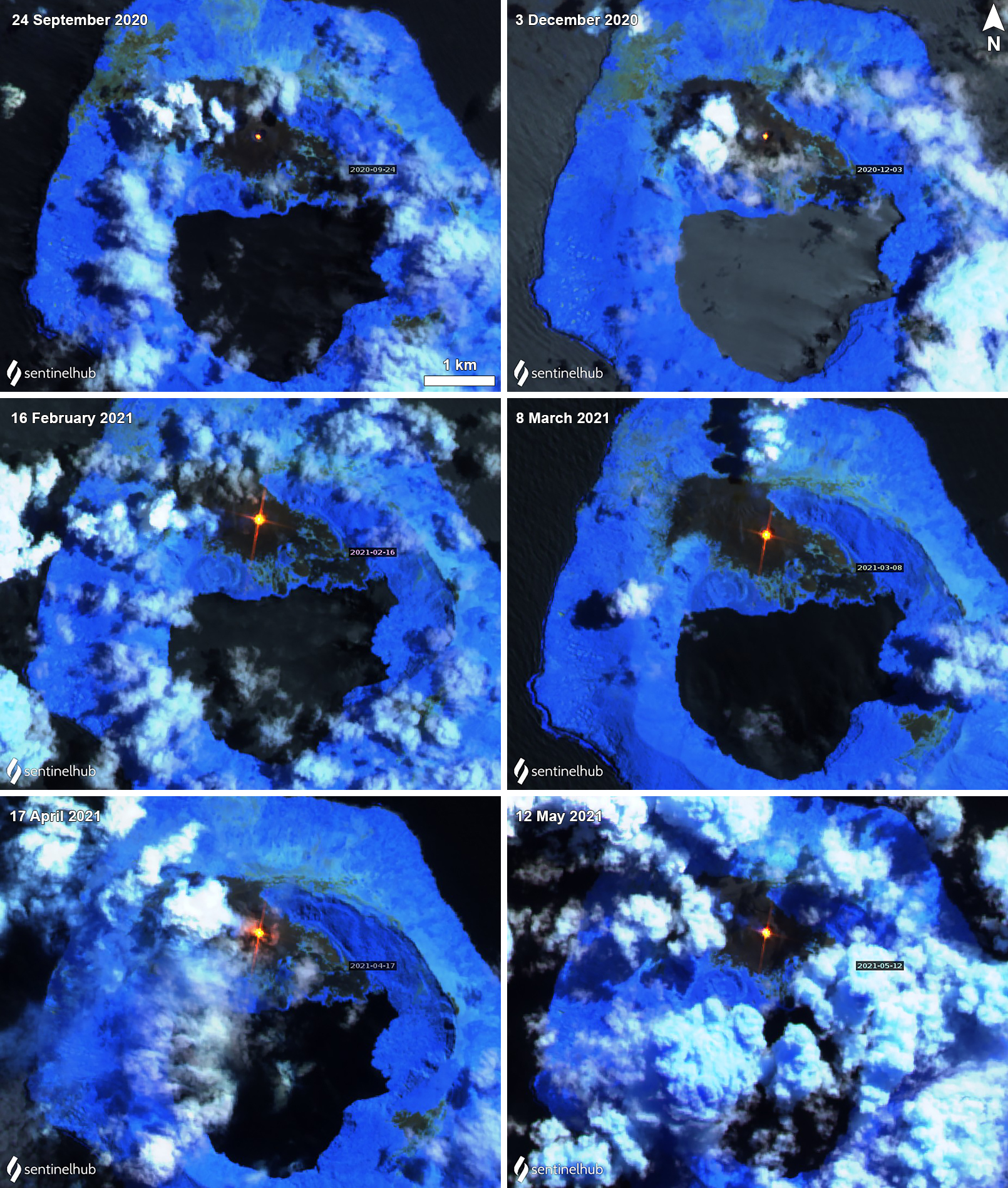Report on Tofua (Tonga) — August 2021
Bulletin of the Global Volcanism Network, vol. 46, no. 8 (August 2021)
Managing Editor: Edward Venzke.
Edited by Kadie L. Bennis.
Tofua (Tonga) Intermittent thermal anomalies and sulfur dioxide emissions in the Lofia crater during August 2020-July 2021
Please cite this report as:
Global Volcanism Program, 2021. Report on Tofua (Tonga) (Bennis, K.L., and Venzke, E., eds.). Bulletin of the Global Volcanism Network, 46:8. Smithsonian Institution. https://doi.org/10.5479/si.GVP.BGVN202108-243060
Tofua
Tonga
19.75°S, 175.07°W; summit elev. 515 m
All times are local (unless otherwise noted)
Tofua is a remote volcano in the central part of the Tonga Islands group that contains a 5-km-wide caldera; three post-caldera cones were constructed at the N end of a caldera lake. The easternmost cone has three craters that have produced young basaltic-andesite lava flows, some of which traveled into the caldera lake. The largest and northernmost of the cones, Lofia, has a steep-sided crater that is 70 m wide and 120 m deep and has been the source of historical eruptions dating back to the 18th century. Recent activity has been characterized by intermittent thermal anomalies in the Lofia crater (BGVN 45:08), which continues through this reporting period of August 2020 through July 2021. Information primarily comes from satellite data.
Summary of activity during August 2020-July 2021. No ash advisories were issued during the reporting period; however, intermittent hotspots were detected by Sentinel-2 thermal satellite imagery and Suomi NPP/VIIRS sensor data throughout the reporting period (figure 12). Anomalies from the MODVOLC system clustered during February 2021 through April and June. There was a notable increase in activity during mid-February through July, compared to the previous months, which included distinct sulfur dioxide plumes (figure 13) and consecutive days with thermal anomalies, according to NASA VIIRs satellite data.
Sentinel-2 infrared satellite imagery and NASA Worldview detected intermittent thermal anomalies during August 2020 through July 2021 dominantly in the Lofia crater (figure 14); rare fires were noted along the NW coast of the island. Beginning in mid-February, the activity notably increased with a stronger thermal anomaly. This increase was accompanied by white gas-and-steam emissions, which included distinct sulfur dioxide plumes.
Geological Summary. The low, forested Tofua Island in the central part of the Tonga Islands group is the emergent summit of a large stratovolcano that was seen in eruption by Captain Cook in 1774. The summit contains a 5-km-wide caldera whose walls drop steeply about 500 m. Three post-caldera cones were constructed at the northern end of a cold fresh-water caldera lake, whose surface lies only 30 m above sea level. The easternmost cone has three craters and produced young basaltic andesite lava flows, some of which traveled into the caldera lake. The largest and northernmost of the cones, Lofia, has a steep-sided crater that is 70 m wide and 120 m deep and has been the source of historical eruptions, first reported in the 18th century. The fumarolically active crater of Lofia has a flat floor formed by a ponded lava flow.
Information Contacts: MIROVA (Middle InfraRed Observation of Volcanic Activity), a collaborative project between the Universities of Turin and Florence (Italy) supported by the Centre for Volcanic Risk of the Italian Civil Protection Department (URL: http://www.mirovaweb.it/); Hawai'i Institute of Geophysics and Planetology (HIGP) - MODVOLC Thermal Alerts System, School of Ocean and Earth Science and Technology (SOEST), Univ. of Hawai'i, 2525 Correa Road, Honolulu, HI 96822, USA (URL: http://modis.higp.hawaii.edu/); NASA Global Sulfur Dioxide Monitoring Page, Atmospheric Chemistry and Dynamics Laboratory, NASA Goddard Space Flight Center (NASA/GSFC), 8800 Greenbelt Road, Goddard, Maryland, USA (URL: https://so2.gsfc.nasa.gov/); NASA Worldview (URL: https://worldview.earthdata.nasa.gov/); Sentinel Hub Playground (URL: https://www.sentinel-hub.com/explore/sentinel-playground).




